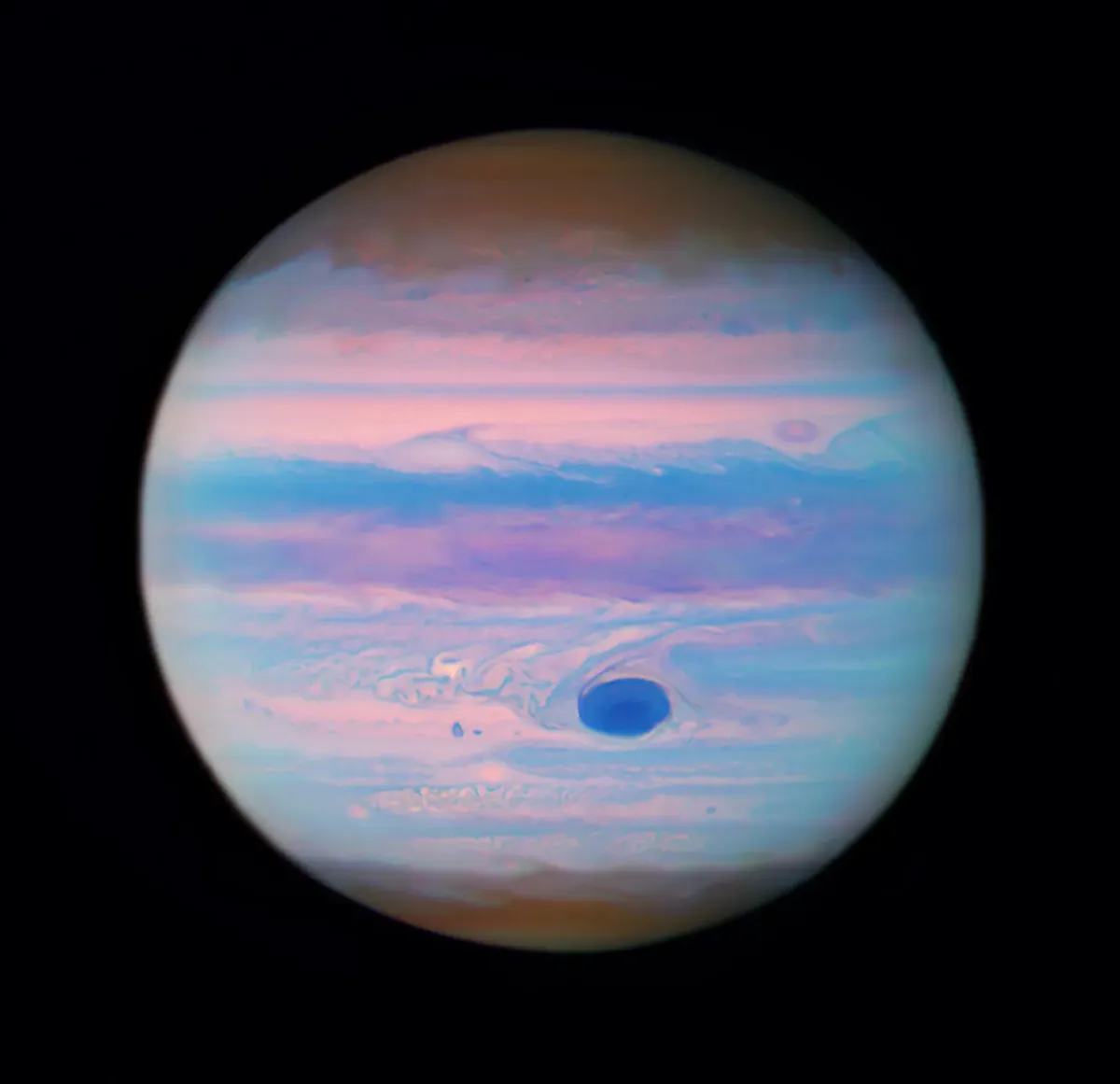The Hubble Space Telescope has captured this image of Jupiter in ultraviolet light to mark the planet's opposition on 3 November 2023.
Opposition is one of the best times to observe any planet, and means Jupiter is wonderfully bright to the naked eye.
Find out more about this in our guide on how to observe Jupiter through a telescope.
What Hubble’s ultraviolet Jupiter image shows

This Hubble image is presented in false colour because the human eye can't observe ultraviolet light.
But that's why astronomers use the electromagnetic spectrum to observe the Universe: it gives them the chance to see features that would normally be beyond our vision.
The first thing we probably notice about this Hubble ultraviolet image of Jupiter is how the Great Red Spot appears blue.
The Great Red Spot is a huge cyclone in Jupiter’s atmosphere that appears red to the human eye.
But in ultraviolet it appears darker because, NASA says, “high altitude haze particles absorb light at these wavelengths."
And this is why the regions at Jupiter's poles appear dark and muddy in this ultraviolet image.
These areas are absorbing less of the light because of differences in particle size, composition or altitude.
Studying Jupiter's clouds

Jupiter is known as a gas giant because the planet is a stormy, turbulent world whose surface isn't solid and rocky like Earth or Mars.
One of the key objectives in studying Jupiter with missions like NASA's Juno probe or the Hubble Space Telescope is to learn more about what lurks beneath the clouds.
And this ultraviolet image of Jupiter is part of a Hubble project to analyse Jupiter's superstorm system.
The astronomers behind the image intend to map deep water clouds using Hubble observations to define 3D cloud structures in the gas giant's atmosphere.
